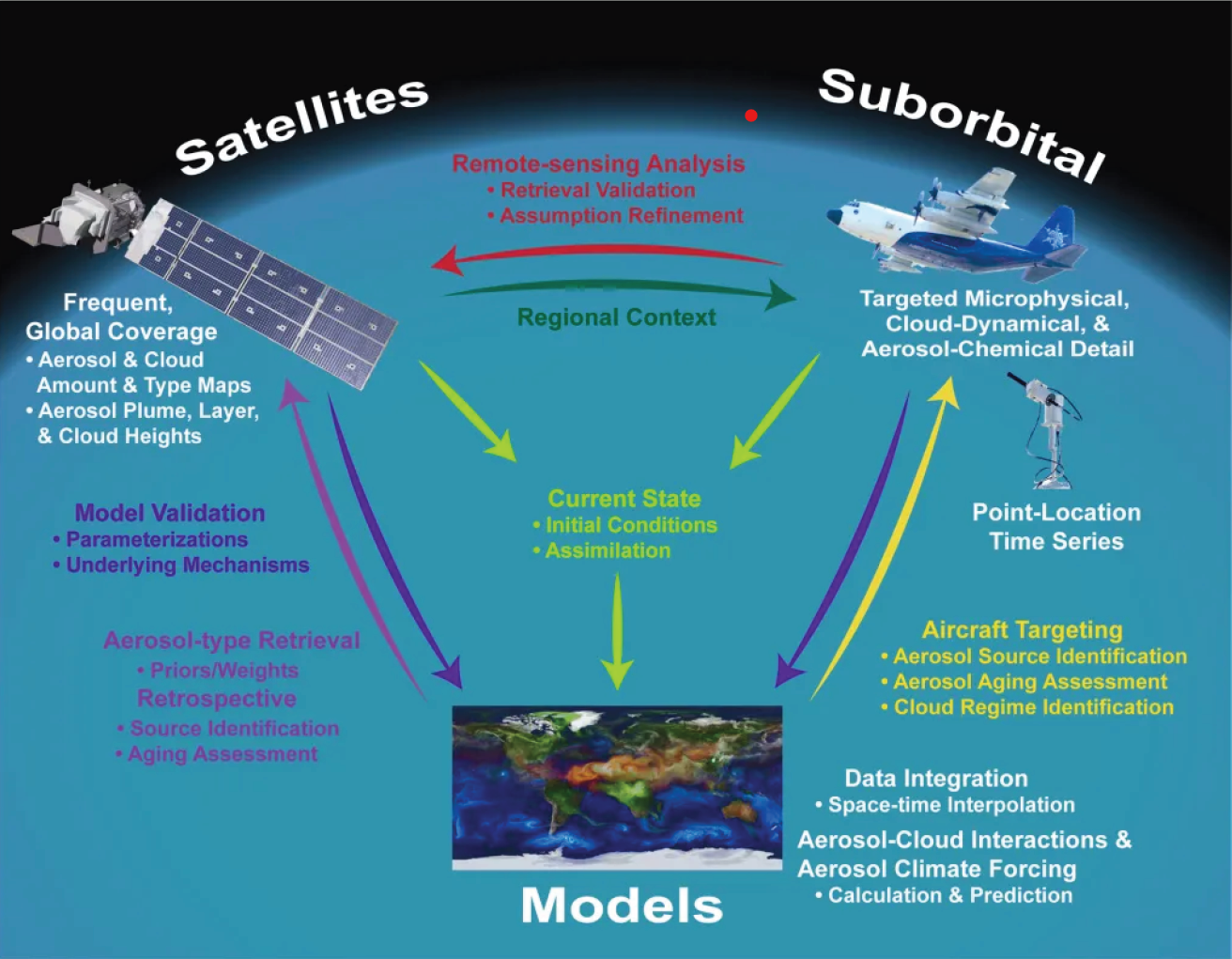Steps Toward Realizing the Potential of NASA’s Earth Observing System: Reducing Aerosol-Related Climate-Forcing Uncertainty and the Overall Uncertainty in Climate Prediction
Ralph Kahn, University of Colorado Boulder
11:00 am – 12:00 pm MDT
The EOS Era is drawing to a close, having produced almost 25 years of global aerosol data from instruments such as the Multi-angle Imaging SpectroRadiometer (MISR) and the MODerate resolution Imaging Spectroradiometer (MODIS). Over this time, we have developed the tools, the experience, and the understanding to extract the scientific value of the MISR and associated aerosol data records in service of learning about Earth – the evolution of wildfire smoke, desert dust, and volcano plumes, air quality and particulate pollution mapping, globally. We have demonstrated all these capabilities in published studies, and validated with ground-based-network observations and in situ data from field campaigns wherever possible. These efforts can contribute to advancing climate analysis and prediction, a primary goal for fielding these instruments. But doing so will require greater synthesis of satellite and suborbital measurements with models. Each of these elements has a role to play in addressing societally important questions, from constraining aerosol forcing in climate models to issuing smoke advisories for communities downwind of major wildfires, as illustrated in the figure. This presentation will review the aerosol-related capabilities we have demonstrated with MISR and MODIS, will discuss how the results fit into the larger context of constraining aerosol-climate forcing, and will conclude by pointing to next steps required to meet the promise of the three-way street.